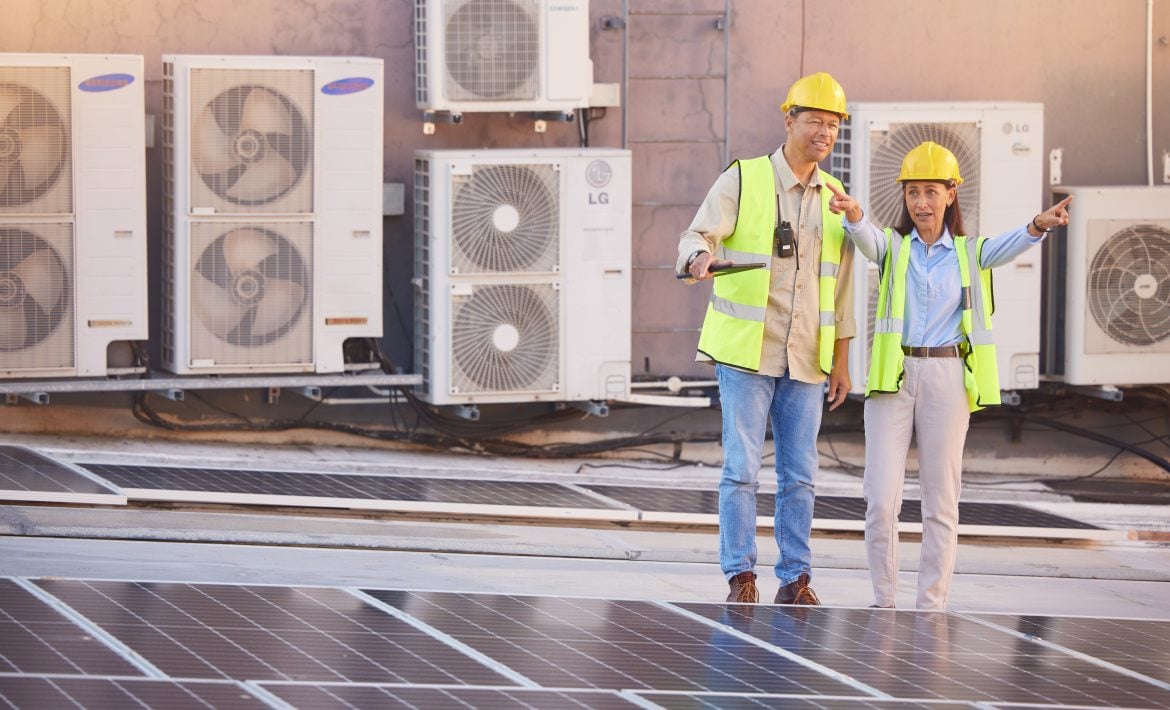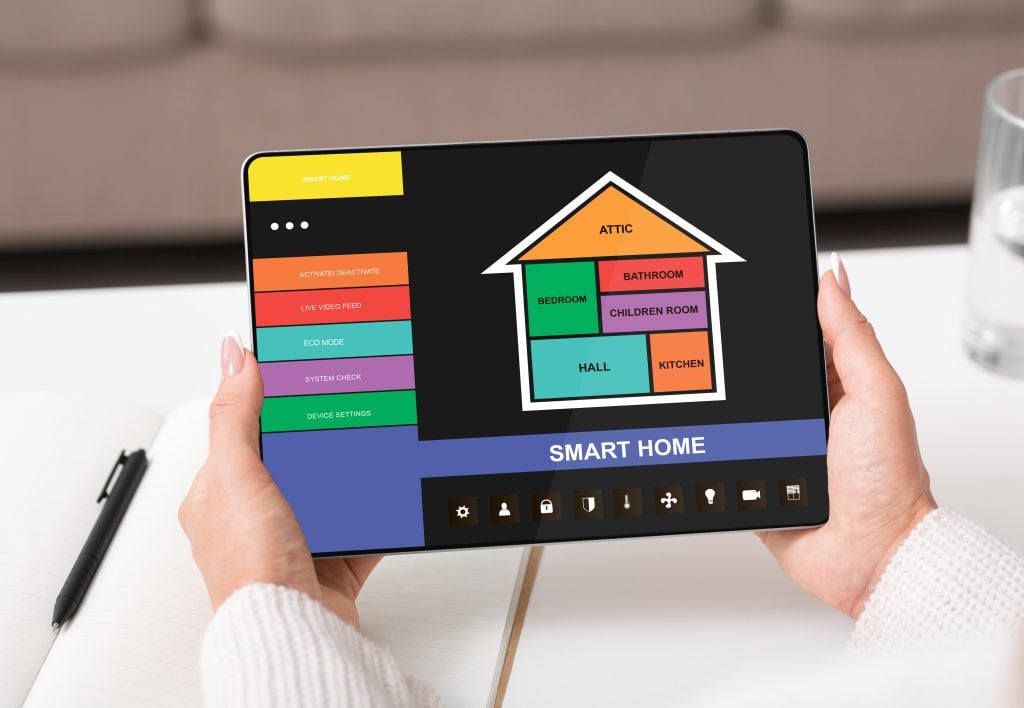

Building energy-efficient homes is not just a trend; it’s a requirement. But navigating the world of building regulations can be tricky. Fear not, builders and developers! This guide unravels the mystery behind SAP, a crucial element in ensuring your projects meet energy performance standards. Let’s delve into what SAP is, why it matters, and how it can empower you to build smarter and more sustainable homes.
While the term “SAP” might be unfamiliar to many new homeowners, it has long been a fundamental aspect of construction planning in the UK, contributing significantly to the energy performance of buildings.
SAP, or Standard Assessment Procedure, plays a pivotal role in assessing the energy efficiency of newly constructed dwellings, serving as a guideline for compliance with Part L of the building regulations.
Essentially, SAP calculations provide a systematic method for evaluating various factors that influence a building’s energy performance, such as construction materials, insulation, heating, ventilation, lighting, and renewable energy technologies.
By analyzing these elements, SAP helps construction companies streamline project delivery, satisfy client requirements, and ultimately enhance profitability.
In essence, SAP is not merely a bureaucratic hurdle but a practical tool for optimizing energy usage and reducing environmental impact in the construction sector.
Transitioning from conventional construction practices to embracing SAP calculations signifies a shift towards more sustainable and environmentally conscious building methods.
As we delve deeper into the role of SAP in achieving energy efficiency, it becomes evident that this standardized procedure is more than just a regulatory requirement—it is a cornerstone of modern construction practices in the UK.
Let’s explore how SAP calculations serve as a crucial tool in achieving energy efficiency and sustainability in the construction industry.
What are SAP Calculations?

SAP (Standard Assessment Procedure) calculations are a standardized method used in the UK construction industry to evaluate the energy performance of newly built dwellings.
They are mandated by Part L of the building regulations and are instrumental in ensuring that buildings meet energy efficiency standards.
Here are The Key Components:
- Construction Materials
SAP calculations assess the types and quality of materials used in building construction. This includes factors such as the thermal conductivity of materials, which determines their ability to retain heat.
- Thermal Insulation
The level of thermal insulation in walls, roofs, and floors is evaluated. Proper insulation is essential for reducing heat loss and maintaining comfortable indoor temperatures.
- Heating, Cooling, and Ventilation Systems
The efficiency of heating, cooling, and ventilation systems is analyzed. This includes assessing the effectiveness of heating systems, such as boilers or heat pumps, as well as ventilation systems for air quality control.

- Lighting
SAP calculations consider the lighting design of a building, including the type of lighting fixtures and their energy efficiency. Energy-efficient lighting solutions, such as LED bulbs, are encouraged to reduce electricity consumption.
- Renewable Energy Technologies
The incorporation of renewable energy technologies, such as solar panels or heat pumps, is evaluated. These technologies harness natural resources to generate energy, contributing to a building’s overall energy efficiency.
Exclusions in SAP Calculations: Here’s What’s Excluded
While SAP calculations comprehensively assess a building’s energy performance, it’s important to note certain exclusions:
Cooking and Appliances:
SAP calculations focus solely on aspects directly related to the building’s energy efficiency. As such, energy usage associated with cooking activities and household appliances is not considered in the calculation process.
- Cooking activities, including the use of stoves, ovens, and other kitchen appliances, are excluded from SAP calculations.
- Energy consumed by household appliances such as refrigerators, washing machines, and televisions is also not factored into the assessment.
These exclusions allow SAP calculations to concentrate specifically on the building’s core energy performance metrics, providing a clear evaluation of its overall efficiency.
What are the Importance of SAP Calculations: Why Do They Matter?
- Regulatory Compliance
SAP calculations are essential for demonstrating compliance with Part L of the building regulations. They provide a standardized method for assessing a building’s energy efficiency and ensuring that it meets regulatory requirements.
- Energy Efficiency
By identifying areas for improvement and optimizing design choices, SAP calculations help builders create more energy-efficient buildings. This not only reduces energy consumption and operating costs but also contributes to environmental sustainability.
- Client Satisfaction
Building owners benefit from SAP calculations by having energy-efficient homes that are comfortable to live in and cost-effective to maintain. Meeting or exceeding energy efficiency standards enhances client satisfaction and the reputation of construction companies.
- Financial Savings
Energy-efficient buildings require less energy for heating, cooling, and lighting, resulting in lower utility bills for occupants. This translates to long-term financial savings and increased affordability for homeowners.

- Environmental Impact
SAP calculations play a crucial role in reducing the carbon footprint of buildings by promoting energy efficiency and the use of renewable energy technologies. By lowering energy consumption, SAP contributes to mitigating climate change and preserving natural resources.
In summary, SAP calculations are a vital tool in the construction industry for evaluating the energy performance of buildings.
By analyzing various factors such as construction materials, thermal insulation, and renewable energy technologies, SAP calculations help builders design and construct energy-efficient dwellings that comply with regulatory standards.
What is The SAP Calculation Process?
As we mentioned earlier, The SAP (Standard Assessment Procedure) calculation process is a vital component of ensuring energy efficiency and regulatory compliance in building construction in the UK.
Here’s a detailed breakdown of the steps involved:
- Engage a Qualified SAP Assessor Early in the Design Process
- Importance of involving a certified SAP assessor at the initial stages of design.
- Early engagement allows for optimization of energy performance from the outset.
- Provide Detailed Information to the Assessor:
- Gather and provide comprehensive data to the SAP assessor, including floorplans, elevations, insulation details, heating/ventilation specifications, and renewable technology plans.
- Accuracy and completeness of information are crucial for precise SAP calculations.
- Input Data into SAP Calculation Software:
- The SAP assessor inputs all relevant data into specialized SAP calculation software.
- Software calculates the energy performance of the building based on the provided information and standard algorithms.
- Determine Compliance with Building Regulations
- Assess whether the proposed building design meets the energy efficiency requirements outlined in Part L of the building regulations.
- Evaluate various factors such as construction materials, insulation levels, heating systems, and renewable energy technologies to ensure compliance.
Others include:
- Collaborate with Clients and Designers to Finalize Design
First, review SAP calculation results with clients and designers. Then, discuss any necessary adjustments or modifications to achieve compliance with building regulations and improve energy performance.

- Produce Predicted Energy Assessment Report
Next, the SAP assessor generates a Predicted Energy Assessment (PEA) report based on the SAP calculation results.
Consequently, the report outlines the predicted energy consumption and efficiency rating of the building.
- Incorporate Design Changes and Air Pressure Test Results
If required, incorporate any design changes or improvements identified during the SAP calculation process. Additionally, conduct air pressure tests to assess the building’s airtightness, and adjust calculations accordingly.
- Generate Energy Performance Certificate (EPC)
Once the final design is confirmed to meet regulatory requirements, the SAP assessor issues an Energy Performance Certificate (EPC) for the building.
This certificate provides an official rating of the building’s energy efficiency, ranging from A (most efficient) to G (least efficient).
The SAP calculation process is iterative, involving continuous collaboration and refinement to ensure that the building design meets energy efficiency standards and regulatory requirements.
Therefore, it requires close coordination between clients, designers, and certified SAP assessors to achieve optimal results
PS: Failing the SAP calculations means the property cannot be rented or sold without an EPC, as passing is mandatory for getting building control approval.
Speaking of engaging a qualified SAP assessor early in the design process is crucial.
Here’s why it is important:
- Early Optimization
Involving a SAP assessor from the outset allows for optimization of energy performance right from the design phase.
This proactive approach ensures that energy-saving measures are integrated into the initial plans, rather than being retrofitted later, which can be more costly and less effective.
- Comprehensive Assessment
The SAP assessor gathers detailed information about the building design, including floorplans, elevations, insulation details, heating/ventilation specifications, and renewable technology plans.
This comprehensive data collection is essential for accurate SAP calculations.
- Regulatory Compliance
Collaboration between clients, designers, and assessors is essential to ensure compliance with building regulations.
By working together, they can address any potential issues early on, avoiding delays or rework during the construction process.
- Streamlined Process
The SAP calculation process follows a series of steps, starting from the initial data collection and assessment to the finalization of the design and obtaining the Energy Performance Certificate (EPC).
Each step is meticulously executed to ensure accuracy and compliance.
- Client Satisfaction
Engaging a SAP assessor early and collaborating effectively throughout the process helps to satisfy client requirements.
Clients appreciate the proactive approach and the assurance that their building will meet energy efficiency standards and regulatory requirements.
Transitioning smoothly through the SAP calculation process requires effective communication and cooperation among all stakeholders.
By engaging a qualified SAP assessor early on and fostering collaboration between clients, designers, and assessors, construction projects can proceed efficiently while ensuring compliance with building regulations and delivering energy-efficient buildings.
Strategies for Optimizing Energy Performance
Optimizing energy performance in buildings is essential for reducing energy consumption and minimizing environmental impact.
Here are some effective strategies:
- Prioritizing Building Fabric Improvements
Efficient insulation and structural enhancements are fundamental in minimizing energy loss:
- Exceeding Minimum Insulation U-Values
Utilize insulation materials surpassing regulatory requirements, reducing heat loss through walls, roofs, and floors.
- Installing High-Performance Windows and Doors
Opt for windows and doors with high thermal efficiency to enhance insulation and comfort indoors.
- Addressing Thermal Bridging
Identify and mitigate areas prone to heat loss, such as junctions between building elements, improving overall energy efficiency.
- Enhancing Heating and Lighting Systems
Optimizing heating and lighting systems promotes energy efficiency and reduces operational costs:
- Advanced Control
Implement advanced heating controls like weather compensators and zoned systems to enhance efficiency and reduce energy wastage.
- Low-Energy Lighting Solutions
Transition to energy-efficient lighting options such as LED or fluorescent bulbs to lower energy consumption and maintenance costs.
- Incorporating Renewable Energy Technologies
Leveraging renewable energy sources reduces reliance on traditional energy:
- Solar Panels
Integrate photovoltaic (PV) solar panels to harness solar energy, reducing reliance on non-renewable sources and lowering utility bills.
- Heat Pumps
Consider installing heat pumps, extracting heat from the environment, for efficient and eco-friendly heating solutions.
- Ensuring Airtightness and Conducting Thorough Air Testing
Maintaining building integrity and conducting tests ensure minimal energy loss:
- Achieve Excellent Airtightness Levels
Focus on sealing the building envelope to prevent air leakage and heat loss, enhancing energy efficiency.
- Thorough Air Testing
Conduct air pressure tests to identify and address air leakage issues, ensuring optimal energy performance and indoor comfort.
Ensuring Building Regulations Compliance
Ensuring compliance with building regulations is a critical aspect of construction.
Here are the key targets and how SAP calculations help achieve them:
Key Targets for Compliance with Building Regulations
- Fabric Heat Retention
Ensure high levels of thermal insulation to minimize heat loss through walls, roofs, floors, windows, and doors. Good insulation keeps the building warm in winter and cool in summer, reducing energy consumption.
- Solar Gain Optimization
Optimize the placement and size of windows to maximize solar gains in winter while minimizing overheating in summer. This balance helps reduce the need for artificial heating and cooling.
- Construction Quality
Maintain high construction quality to achieve excellent airtightness and reduce thermal bridging. High-quality construction prevents uncontrolled air leakage and heat transfer, enhancing energy efficiency.
- Predicted CO2 Emissions
Meet the prescribed limits on CO2 emissions associated with the building’s energy consumption. Lower emissions contribute to environmental sustainability and compliance with regulations.
How SAP Calculations Contribute to Meeting These Targets
- SAP calculations evaluate the energy performance of buildings, focusing on insulation, heating, ventilation, lighting, and renewable technologies.
By analyzing these factors, SAP ensures the building meets the energy efficiency standards set by Part L of the building regulations.
- SAP assessors use specialized software to model the energy performance of the building.
This model predicts energy consumption and CO2 emissions, helping identify areas for improvement to meet regulatory targets.
- The calculations result in a Predicted Energy Assessment (PEA) report and an Energy Performance Certificate (EPC).
The EPC provides an official rating of the building’s energy efficiency, which is required for renting or selling the property.
Recommendation to Leverage Specialized Consultants
Engaging specialized consultants, like SAP assessors, can streamline the process of meeting Part L requirements and other building regulations.
These experts provide valuable advice on design modifications, material choices, and technology integrations to enhance energy performance.
Consultants can conduct detailed assessments and recommend specific actions to improve compliance. Their expertise helps avoid costly mistakes and ensures the building meets all necessary regulations efficiently.
Conclusion
The construction industry plays a crucial role in promoting energy efficiency and environmental sustainability.
By adopting the Standard Assessment Procedure (SAP) calculations, builders and developers can optimize the energy performance of their projects, ensuring they meet stringent building regulations.
Through strategic design choices, such as improving building fabric, enhancing heating and lighting systems, incorporating renewable energy technologies, and ensuring airtightness, they can create energy-efficient dwellings that reduce carbon footprints and contribute to a greener future.
However, navigating the complexities of SAP calculations and building regulations can be challenging.
Therefore, seeking expert guidance from professionals, like George ([email protected]), can streamline the process, ensuring compliance and optimal energy performance.
Building Smarter: Your SAP Questions Answered
- What is the meaning of SAP in the context of building construction?
SAP, or Standard Assessment Procedure, is a government-established methodology for evaluating the energy efficiency of residential buildings.
Consequently, it is essential for assessing a dwelling’s performance in terms of energy usage.
- How does SAP relate to Energy Performance Certificates (EPC)?
SAP involves a series of calculations that are critical for generating an Energy Performance Certificate (EPC). These calculations determine a building’s energy efficiency, which is then reflected in the EPC rating.
- Can you explain what SAP signifies in construction terminology?
In construction, SAP refers to the Standard Assessment Procedure, a protocol used to evaluate the energy efficiency of new residential buildings.
This assessment ensures compliance with Part L1 of the building regulations, which focus on the conservation of fuel and power in buildings.
- What does a SAPS test involve?
A SAPS test uses the Standard Assessment Procedure (SAP) to assess and compare the energy and environmental performance of buildings.
This government-introduced methodology ensures that new developments meet both Building Regulations and various energy and environmental policy initiatives.
What kind of data does a SAP assessor require for calculations?
A SAP assessor needs detailed information such as floorplans, elevations, insulation details, heating and ventilation specifications, and renewable technology plans.
Providing accurate and comprehensive data is crucial for precise SAP calculations.
- How do SAP calculations help in improving construction quality?
SAP calculations highlight areas where improvements can be made, such as enhancing insulation or reducing thermal bridging.
Consequently, these insights lead to better construction practices and higher overall building quality.
- What are the benefits of achieving a high EPC rating?
Achieving a high EPC rating can increase the value of a property and make it more attractive to buyers or tenants.
Additionally, it indicates lower energy costs and a smaller carbon footprint, which are significant selling points in today’s environmentally conscious market.
- How do SAP calculations contribute to reducing CO2 emissions?
SAP calculations assess and suggest improvements in a building’s energy use, directly contributing to lower CO2 emissions.
By ensuring buildings use energy more efficiently, they help reduce the overall carbon footprint of the construction industry.
By understanding and implementing these strategies and insights, builders and developers can not only comply with regulations but also create more energy-efficient and sustainable buildings.
References
[1] – https://illumiti.com/industries/construction/
[2] – https://www.buildenergy.co.uk/services/part-l-sap-calculations/what-are-sap-calculations/
[3] – https://briaryenergy.co.uk/knowledge-bank/driving-energy-efficiency-the-crucial-role-of-an-accurate-sap-calculation/
[4] – https://www.energistuk.co.uk/knowledge/top-tips-for-sap-calculations/
[5] – https://www.linkedin.com/pulse/understanding-energy-performance-certificates-epc-sap-david-higgins
[6] – https://www.eden.gov.uk/planning-and-building/building-control/building-control-guidance-notes/sap-calculations-explained/
[7] – https://www.ukbuildingcompliance.co.uk/what-are-sap-calculations/
[8] – https://www.buildpass.co.uk/blog/sap-calculations-made-easy-for-new-builds/
[9] – https://www.falconenergy.co.uk/what-are-sap-calculations-a-beginners-guide/
[10] – https://erscltd.co.uk/part-l-sap-compliance-epc/
[11] – https://sap.silvertouch.com/blog/sap-erp-software-for-construction-industry/
[12] – https://www.suretysystems.com/insights/unlocking-the-power-of-sap-development-tools-for-your-business/

